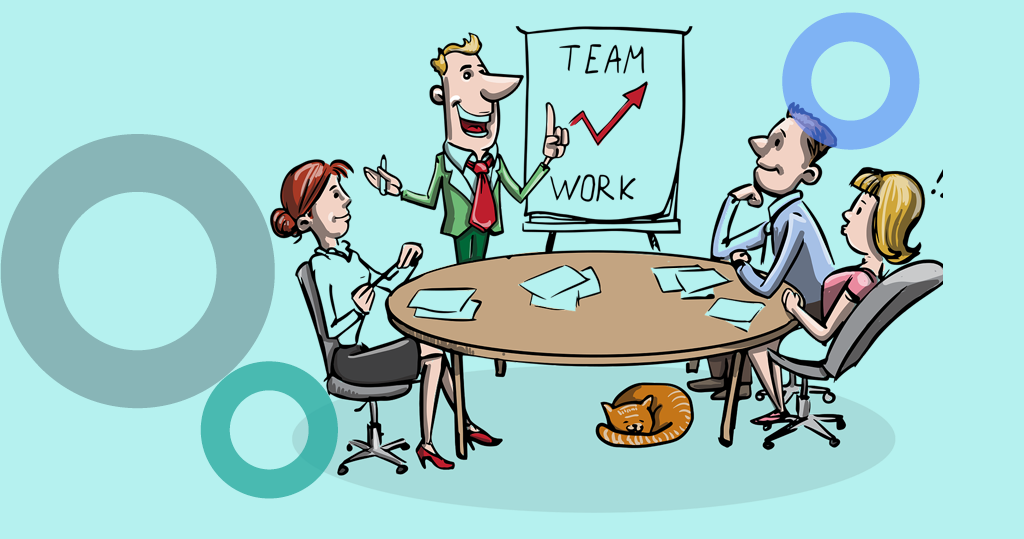How to Run an Effective Brainstorming Session

Brainstorming sessions are a valuable way to solve problems and generate ideas, but they’re not always easy to run. Running a bad meeting is worse than non-productive – it can actively hurt your ability to get your job done. As such, it’s a good idea to learn how to run an effective brainstorming session, starting with using a meeting management software like yoyomeeting. This article outlines everything you need to know on how to run a brainstorming session, including writing an agenda, meeting preparation, facilitation, and more.

Tips on How to Run an Effective Brainstorming Session
Throughout the stages of a brainstorming session, here are some tips to keep in mind:
- Create a detailed agenda
- Prepare for the meeting
- Invite a diverse group
- Pay attention to the meeting space
- Establish the goals
- Establish a time limit
- Prioritize facilitation
- Cut off tangents
- Ask for feedback later
- Understand how to use the information
- Automate using a meeting management software
1. Create a Detailed Agenda
Don’t expect every person who comes into your group to be able to come up with great ideas on the fly. Instead, distribute the topic of conversation before the brainstorming session, by writing a meeting agenda. This will allow some individuals to come up with ideas ahead of time and others to get into the right headspace for the brainstorming session to come. When you create your brainstorming session agenda, you don’t necessarily need to go into specifics, but you should be clear about the topic of discussion as well as the purpose of the meeting.
- Select the attendees
- Establish a date and time
- Book a meeting space
- Add the purpose of the meeting
- Structure the topics for discussion
- Add open-ended questions for each topic
Takeaways:
- Send a detailed agenda ahead of the meeting
- Structure the agenda to include a list of the topics to be discussed
- Be clear about the purpose of the meeting
2. Prepare for the Brainstorming Meeting
After the agenda for the brainstorming session is sent to all meeting participants, it’s time to prepare for the meeting. The brainstorming agenda should be formatted in a way that attendees can understand the purpose of the meeting and the topics to be discussed. The topics on the agenda will be phrased as open-ended questions. To prepare for the brainstorming session, attendees can prepare their thoughts on the topics to be discussed.
Takeaways:
- Each member should individually prepare for the meeting
- Answer questions of topics listed in the brainstorming agenda
3. Invite a Diverse Group
One important ingredient when it comes to how to run an effective brainstorming session is diversity. The importance of diversity in the workplace is highly relevant to business meetings. Brainstorming works best when you get diverse ideas. The best way to ensure this is to get a diverse set of people into the group. Be careful here, though – you want a diverse group, you still want a group that’s going to have both a stake in the idea and that will theoretically end up with a product or idea that’s similar to what your target audience would want to see.
Takeaways:
- Diversity is encouraged
- Invite a diverse group of people who will bring thoughts to the table
- Make sure meeting members have a stake in the idea
4. Pay Attention to the Meeting Space
Once you have your group together, concentrate on having the right space. An isolated space in which every participant feels comfortable and is able to communicate clearly is ideal. Do what you can to minimize distractions and to make it easy for participants to stay in the room until the meeting is over. The better the meeting space, the more likely it will be that your group will stay on topic and generate good ideas. Lastly, consider the equipment you may need – including a monitor, whiteboard, or equipment for conference calls.
Takeaways:
- Host a meeting in an isolated space
- Make sure space makes everyone feel comfortable
- Make sure the space encourages open communication
- The meeting space should limit distractions
- Book a space that has the equipment needed for brainstorming sessions
5. Establish the Goals
The first thing to do when your group gets together is to re-establish your goals. Your group needs to know more than just the topic – they need to know the purpose of getting the group together. This not only helps to guide the group into more productive modes of thought but also places some realistic constraints on the ideas that will be generated. While you want participants to throw out ideas without judgment, establishing the goals will help to keep them on task.
Takeaways:
- Communicate the purpose of the meeting with the group
- Establish goals to keep the group on task
6. Establish the Time Limit
Always set a time limit for brainstorming sessions. While it can be very exciting to sit around and toss out ideas, the truth is that you eventually get to a point of diminishing returns. If you want to ensure that you get the most out of your group, try setting a realistic limit of around half an hour. This is enough time to allow group members to get their thoughts out, but not so much that they will not feel motivated to share. Be sure to mention that members can either schedule a follow-up meeting or share more ideas after the meeting.
Takeaways:
- Set a time limit of an hour and a half
- For ideas that need to be further discussed, set up another meeting

7. Prioritize Facilitation
Always make sure that your brainstorming sessions are properly facilitated, by assigning meeting action items (learn how to assign meeting action items to meeting members). Don’t let a single person take control of the entire process and don’t let anyone hang back and refuse to contribute. To effectively facilitate a brainstorming session, it’s often helpful to have one person available who does nothing more than facilitate conversations and ensure that the process doesn’t go off the rail due to the actions of some of the participants. To have everyone in the group share ideas, consider going around in order to and have 5 minutes to share thoughts.
Takeaways:
- Don’t let one person dominate the brainstorming session
- Assign a group member to be “facilitator”
- Have everyone participate
8. Cut Off Tangents
One of the most common pieces of advice concerning brainstorming is that there are no bad ideas. While ill-thought ideas might serve a purpose, it’s important to cut them off quickly before your team starts to go down unprofitable paths. If someone throws out an idea that’s not really worth discussing, don’t debate it – instead, move on as quickly as possible so that you can get back to the purpose of the meeting. The facilitator of the group can monitor the conversation and get the discussion back on track.
Takeaways:
- Groups should move on from tangents and refocus the conversation
- Don’t debate ideas that aren’t worth discussing
- The group facilitator can monitor discussions
9. Ask for Feedback Later
The end of your brainstorming session might not necessarily mean that everyone is done sharing ideas. Some of your participants might do their best work when they have time to digest what’s gone on in the meeting, so let your participants known that you’ll be happy to take more ideas via email or a shared document. This is a great way to ensure that you continue to get useful information.
Takeaways:
- Encourage participants to follow up on ideas after brainstorming meetings
- Share follow-up thoughts in an email or shared document
10. Understand How to Use The Information
Finally, figure out what you’re going to do with the information. You don’t need to be beholden to all – or even any – of the ideas generated in this meeting. You’re trying to find a platform on which you can build, so take some time to sort through the information to determine if anything generated was actually useful. Once you determine whether an idea is worth pursuing, call a follow-up meeting to discuss the idea. Use meeting minutes from your brainstorming session to build a plan on how to carry out the idea being discussed.
Takeaways:
- Decide if there are any ideas worth further pursuing
- Plan a follow-up meeting to further discuss the idea
- Use meeting minutes from your brainstorming session to form a plan
11. Automate Your Meetings With yoyomeeting
To help organize and manage your next brainstorming meeting, using yoyomeeting. By using meeting software, you can manage your agenda, and enable better meeting preparation.
From meeting planning, meeting recording, and meeting recaps, our meeting management software helps you with all phases of the brainstorming meeting – allowing you to capture all of your great ideas and send them to your group after the meeting.
In Closing
Learning how to run an effective brainstorming session effectively and efficiently is mostly a matter of mastering organization and facilitation. Learn how to bring together the right groups in the right places to get great ideas for the future. While not every meeting will be productive, you might be surprised by the kind of data generated in this type of brainstorming meeting.
We hope you enjoyed reading about having more effective brainstorming sessions. We hope you can incorporate these tips in your next brainstorming meeting
all images Pixabay





